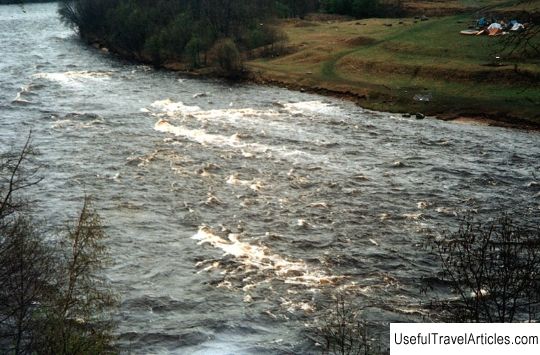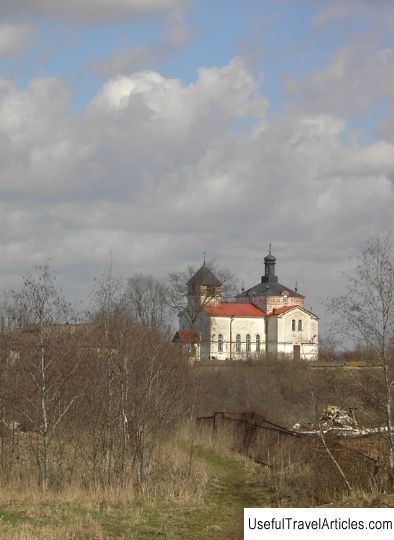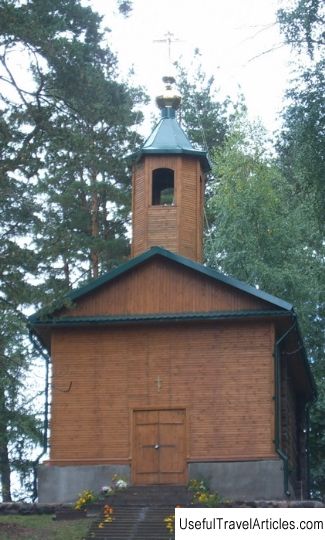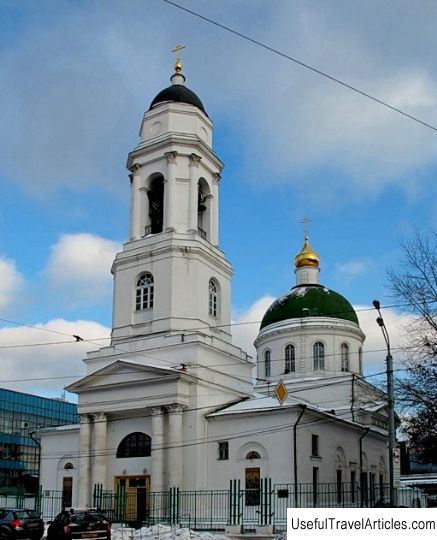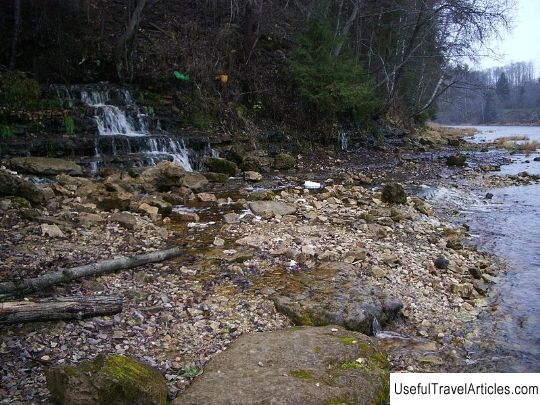Church of Flora and Lavra description and photos - Russia - North-West: Borovichi
Rating: 7,5/10 (100 votes) 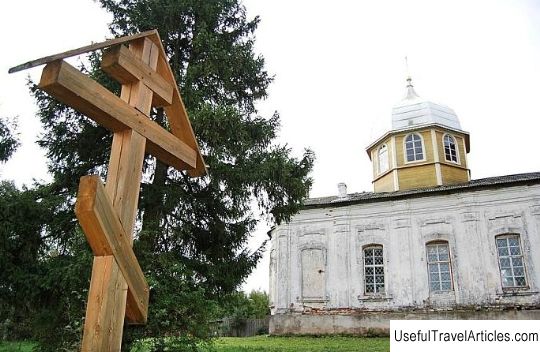
Church of Flora and Lavra description and photos - Russia - North-West: Borovichi. Detailed information about the attraction. Description, photos and a map showing the nearest significant objects. Photo and descriptionThe ancient village of Veliky Porog is located a short distance from Opechensky Ryadok on the left bank of the Msta River. Since ancient times, the Russian people loved space and expanse, therefore, on each hill suitable for agriculture, small farmsteads appeared for one or two huts. Larger settlements were called graveyards. In the ancient chronicles it is written that in the seventeenth century many people lived in the Velikoporozhsky churchyard. The Temple of the Great Threshold was erected on the banks of the river and was dedicated to Saints Florus and Laurus, who were martyred in the second century. The two siblings were known for their faith in Jesus Christ. They lived in Byzantium and were known as skilled masons. Flor and Laurus were invited to build a pagan temple. During their work on the construction of the temple, the brothers converted many people to the Christian faith. They distributed all the money they received for their work to the poor. The temple was built very quickly. The holy brothers gathered about three hundred of their like-minded people, including a pagan priest who had converted to Christianity and his son, set up a cross in the church and prayed throughout the night. All the pagan gods that were made by the pagans for their temple were destroyed by them. The ruler of those lands was terribly angry and ordered to throw the brothers into an empty well and fill them alive with earth, and burn their companions. The relics of Saints Florus and Laurus later came to Constantinople. In Novgorod, there is a tradition that the discovery of the relics of the holy brothers stopped the pestilence of cattle, and they began to be venerated as patrons of horses. Throughout Russia, where the horse was the main assistant in the household, churches were built in honor of the holy martyrs Florus and Laurus. So on the site of the wooden temple in the Great Threshold, a temple of stone was erected. The icon "The Miracle of Florus and Lavra" was of particular spiritual value. The icon was written on the basis of a legend in which a shepherd who lost his horses found them with the help of Saints Florus and Laurus. In the center of the icon is the Archangel Michael, on either side of him are the holy martyrs Florus and Laurus. In the lower part of the icon, horses are depicted in white and black. The brothers receive the reins from the hands of the archangel. Even below are the holy martyrs Meleusippus, Eleusippus and Speusippus. They drive a motley herd to a watering hole. Horses symbolize a changeable world with their own laws. The holy martyrs-riders accept the grace of the Heavenly world. The icon also depicts Saints Modest of Jerusalem and Blasius, who patronize livestock. Sergius of Radonezh blessed Dmitry Donskoy for the Battle of Kulikovo on the day of remembrance of Saints Florus and Laurus, since then in Russia they have been revered as defenders of the Russian land ... A special edition of the icon "The Miracle of Florus and Lavra" was created, which depicts the Archangel Michael, presenting the icon of the Savior Not Made by Hands with the bridles of saddled war horses to Florus and Lavra. The holy image blessed military service and combined worldly work on earth and military service. The Temple of the Great Threshold is a worthy monument of Russian architecture of the eighteenth century. Its beauty and grace is emphasized by the rapid rapids of the Msta River, above which the temple rises majestically. The cemetery complements the architectural composition, surrounded by a church fence. The chapels and the temple of the Opechensky Row are attributed to the temple of Florus and Laurus. During the patronal feast of Florus and Laurus, a fair was held in the Great Threshold. After the service, horses were driven from all around to the temple, which were decorated with ribbons and covered with embroidered blankets and harnesses. The horses bathed in the river were led to the temple, and after a solemn prayer, they were sprinkled with holy water. In the early forties of the XX century, the service in the temple was stopped, the building was used as a vegetable store, the cemetery was abandoned. The dome and the bell tower were subsequently destroyed. The ruins of the church have survived to this day, a glance at which makes the heart sink and grieve for the trampled shrine. In agriculture, live horses were replaced by iron ones, the connection with nature weakened, and the people forgot their patrons, whose names are the personification of nature: Flor is blooming, and Laurel is a tree made of branches, which was made with wreaths that adorn the winners. Currently, restoration work is underway in the church of Florus and Lavra.      We also recommend reading Drama Theater. M. Gorky description and photo - Belarus: Minsk Topic: Church of Flora and Lavra description and photos - Russia - North-West: Borovichi. |
